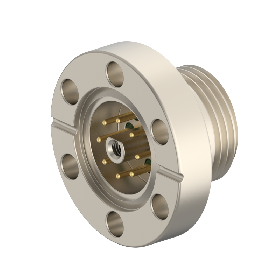Since ceramics are mainly used as insulating materials in vacuum technology, their electrical properties have become one of the most important physical properties of ceramic materials. The electrical properties of ceramics mainly include:
1) Resistivity: The resistivity of ceramic materials is generally very large, the volume resistivity is generally greater than 1010Ω·cm, and the surface resistivity (sheet resistance) is greater than 1010Ω. The main factors affecting the resistivity of ceramic materials are: the composition, crystal structure and porosity of ceramics. The monovalent positive ions of alkali metals can cause quite strong conduction. Therefore, ceramics as insulating materials should minimize these ions and increase high-priced metals. The content of oxides. The resistivity of ceramic materials increases with temperature, that is, ceramics have a negative temperature coefficient of resistance.
Ceramic materials generally contain a small amount of glass phase, and the glass phase has many defects and low activation energy, which leads to a decrease in resistivity. Ceramics contain a small amount of pores, which can lead to an increase in resistivity, but the amount of pores is large and continuous At this time, the pores may form channels, which are easy to absorb water vapor and impurities, and the resistivity decreases instead.
2) Dielectric loss: the conductance and polarization of ceramic materials under the action of an alternating electric field will convert part of the electrical energy into heat, which is called the dielectric loss of ceramics. The dielectric constant of ceramics is related to temperature, and the dielectric loss tangent is not only related to temperature, but also to frequency.
As a dielectric, ceramic materials can maintain a dielectric state only under a certain electric field strength. When the electric field strength exceeds a certain critical value, the medium changes from a dielectric state to a conductive state. This phenomenon is called dielectric breakdown. The corresponding value of critical electric field strength is called dielectric strength, or breakdown electric field strength or dielectric strength. There are generally two processes when dielectric breakdown occurs:
a. The medium changes from a dielectric state to a conductive state;
b. The medium is mechanically damaged, forming a breakdown channel with a small diameter penetrating the medium.
Generally, corona or cremation occurs at the breakdown point. When the power is high, because the medium is heated strongly, metal vapor is generated, and sometimes the medium at the breakdown site will be melted because of the arc generated. It should be noted that if the ceramic surface is not smooth or has pores, it is easy to contaminate various impurities (metal particles, water vapor, oil stains, etc.) on the ceramic surface, and these contaminated impurities will cause the surface of the ceramic insulator to break down. In order to reduce pollution and improve the breakdown strength and insulation resistance of the ceramic surface, the outer surface of high-voltage insulating ceramic parts for electric vacuum is often glazed. The electric vacuum porcelain shaft is actually a kind of high resistance, high melting point glass, which has high surface resistance and does not absorb moisture. At present, most of the glazes used in domestic electric vacuum porcelain use high-value porcelain shafts. Its main components are kaolin, quartz, talc, calcite, etc. The chemical composition usually contains SiO2 (50% by mass), Al2O3 (more than 10% by mass), and other oxides (about 20% by mass).
(huiputech)

Z-S-CF16-0810S,Z-S-CF16-0810M,Z-S-CF16-0810L
2025-11-04
Contact : Martin
Tel : +86 18588203671
Mobile : +86 18588203671
Fax : +86 18588203671
Email : Martin@huiputech.com
Address : 3/F, Building F, GLORY Technology Park, No.2 Baolong 5th Road, Longgang District, Shenzhen, Guangdong, China.